INFRASTRUCTURE
AND THE REMAKING OF ASIA
In the 21st century, infrastructure has undergone a seismic shift from West to East. Once concentrated in Europe and North America, global infrastructure production today is focused squarely on Asia.
Infrastructure and the Remaking of Asia investigates the deeper implications of that pivot to the East. Written by leading international infrastructure experts, it demonstrates how new roads, airports, pipelines, and cables are changing Asian economies, societies, and geopolitics—from the Bosporus to Beijing, and from Indonesia to the Arctic. Ten tightly interwoven case studies powerfully illustrate infrastructure’s leading role in three global paradigm shifts: climate change, digitalization, and China’s emergence as a superpower.
Combining social science methods with mapping techniques from the design professions, the book establishes a dialogue between academic research on infrastructure and the professional insights of those responsible for infrastructure’s planning, production, and operation.
This mixed method sheds light on the mindset of practitioners, while also attending to the materiality and agency of the infrastructures that they create.
We apply that method to a detailed analysis of transport, energy, telecommunication, and resource extraction projects in China, the Middle East, and Central and Southeast Asia. The book synthesizes research on infrastructure from six academic fields, while making those insights accessible to a wider audience of students, professionals, and the general public.
Edited by Max Hirsh and Till Mostowlansky, Infrastructure and the Remaking of Asia is published by the University of Hawaii Press with the generous support of The Henry Luce Foundation (China Made Project), the Research Grants Council of Hong Kong (Project HKU C7011-16G, Making Modernity in East Asia: Technologies of Everyday Life, 19th-21st Centuries), and the Swiss National Science Foundation.
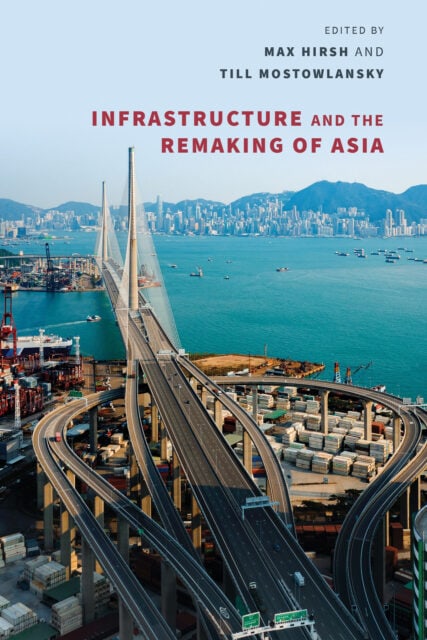
The Chapters
The chapters in this book investigate how infrastructure produces new urban forms, new ways of living, and new modes of thinking. Ten interconnected case studies consider infrastructure both “from above”—as perceived by experts and decision makers—and “from below,” as experienced by middlemen, employees, and everyday users. Click on the map below to learn more.
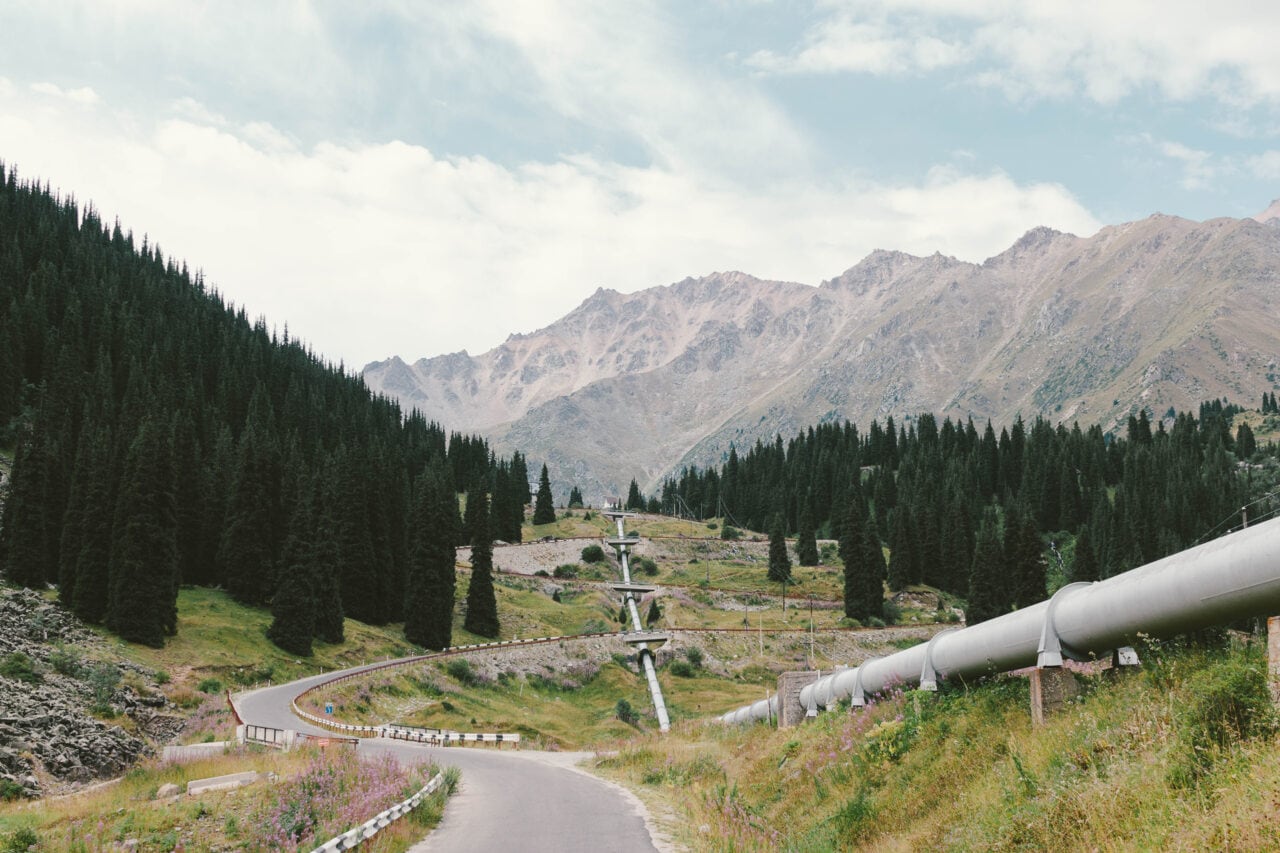
Introduction
Till Mostowlansky and Max Hirsh introduce the book’s key themes and conclusions. Focusing on the concept of scale, they propose a new research agenda for infrastructure studies.
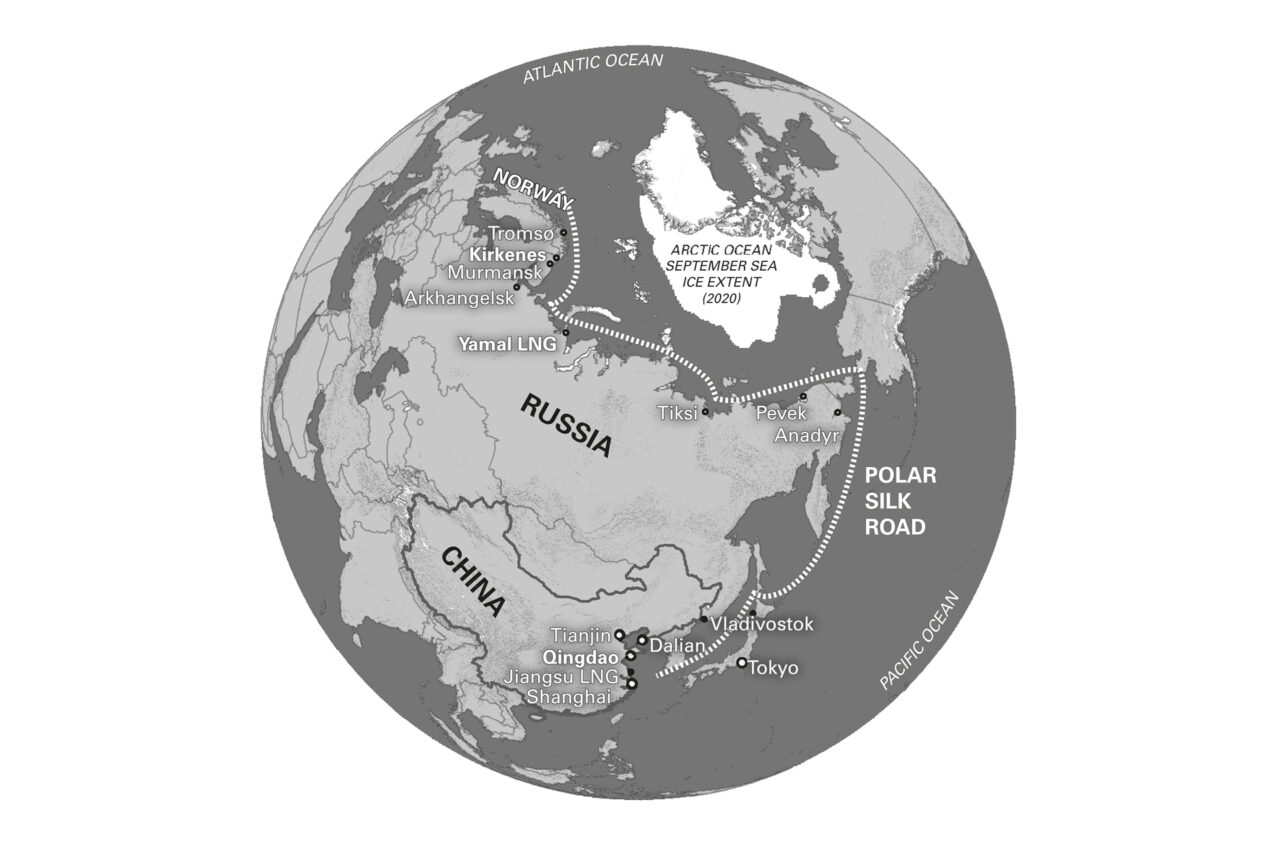
China and the Polar Silk Road
Mia M. Bennett examines how China became a geological force in the Arctic. China is currently the world’s largest consumer of commodities and the largest emitter of greenhouse gases. It has also expanded its infrastructure networks in the Arctic in an effort to advance its political claims as a “near-Arctic state.” Identifying China’s infrastructure investments as a driver of Arctic climate change, Bennett argues that China has become a “geological agent” capable of altering the Earth’s physical structure. She offers a sophisticated insight into how national economic policies—in this case, “capitalism with Chinese characteristics”—effect global ecological transformations.
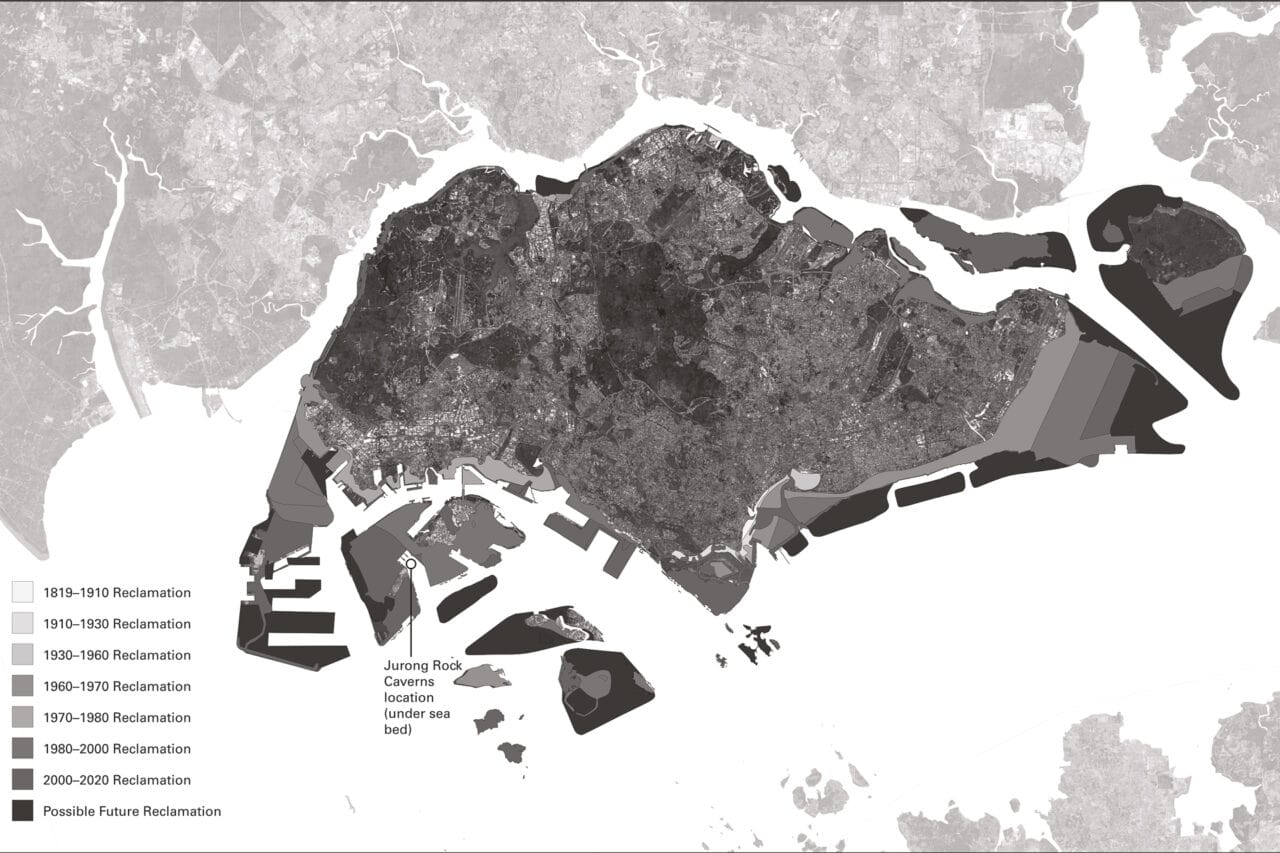
The “Petroleumscaping” of Singapore
Andrew Toland investigates the man-made underground caverns that enabled Singapore to become one of the world’s largest oil refining and trading hubs. Limited land supply impelled policymakers to conceptualize the country’s subsurface as a new frontier for development. That strategy is tied to Singapore’s ambitions to produce a new political economy and national identity. Investigating how technical expertise and cultural attitudes coalesced around the city-state’s unique landscape and geology, Toland uses “petroleumscaping” to illuminate the remaking of Singapore: from a city-state anxious about its lack of land and natural resources, to a country in which both can be artificially constructed.
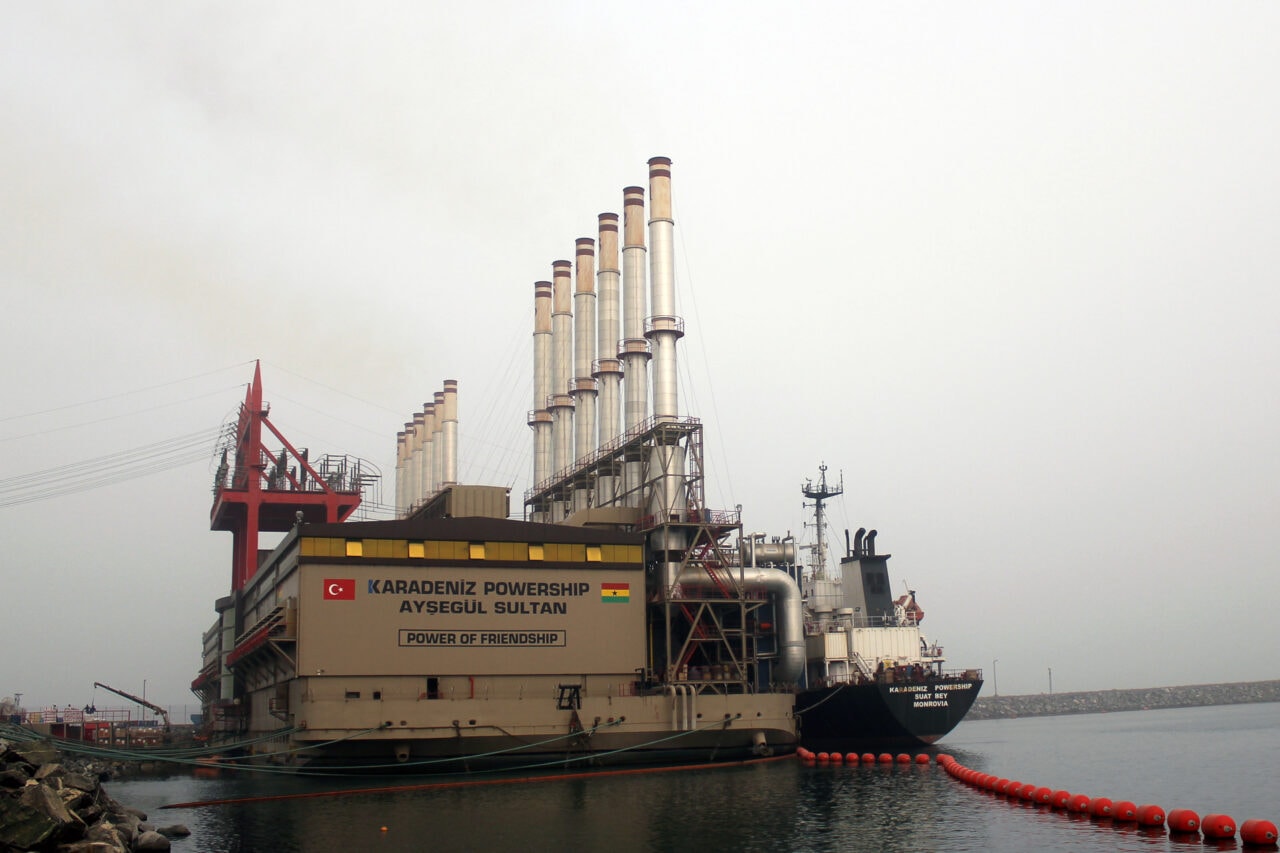
Turkey’s Floating Power Plants
Gökçe Günel charts the rise of Turkish powerships—repurposed vessels that serve as mobile power generators—as floating, provisional energy infrastructure. These offshore power plants attach themselves to national grids and, using petroleum and natural gas, supply cheap supplementary electricity. By enabling countries to overcome chronic shortages, the powerships operate both as vessels for short-term growth and as tools for long-term diplomacy, as Turkey—much like China in the Arctic—seeks to assert itself across a vastly enlarged, loosely defined Asian domain. For the recipient countries, these short-term energy fixes quickly evolve into long-term dependence on distant resource providers.
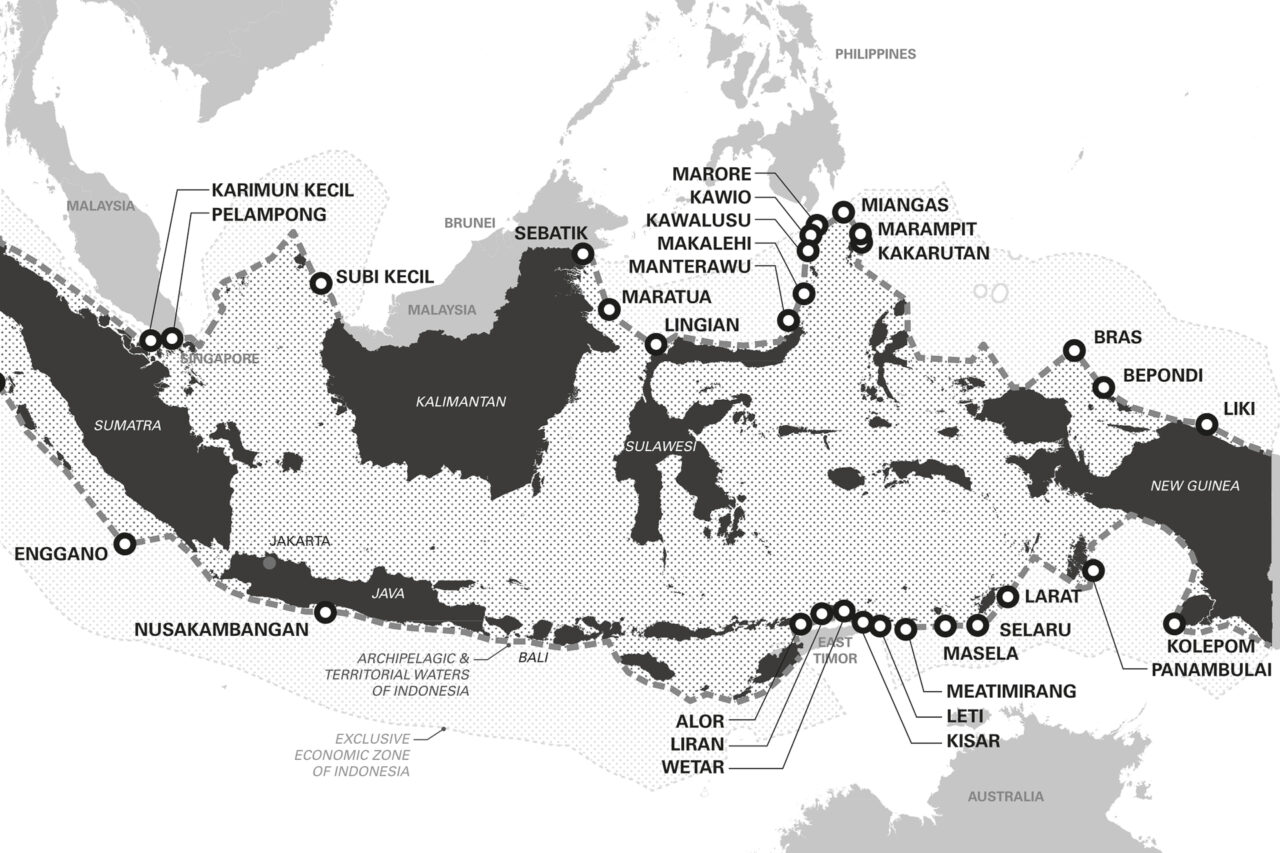
Electrifying Indonesia’s Borderlands
Anto Mohsin situates Indonesian electrification projects as an effort to solidify the country’s territorial integrity. Electricity infrastructure first developed in urban areas, with a slow and still ongoing spread to the countryside. This “center bias” persisted not only because of the government’s priorities, but also because of the country’s archipelagic geography. Despite efforts to centralize energy provision—and governance—through a national grid, many border regions in fact remain dependent on local and/or cross-border electricity solutions.
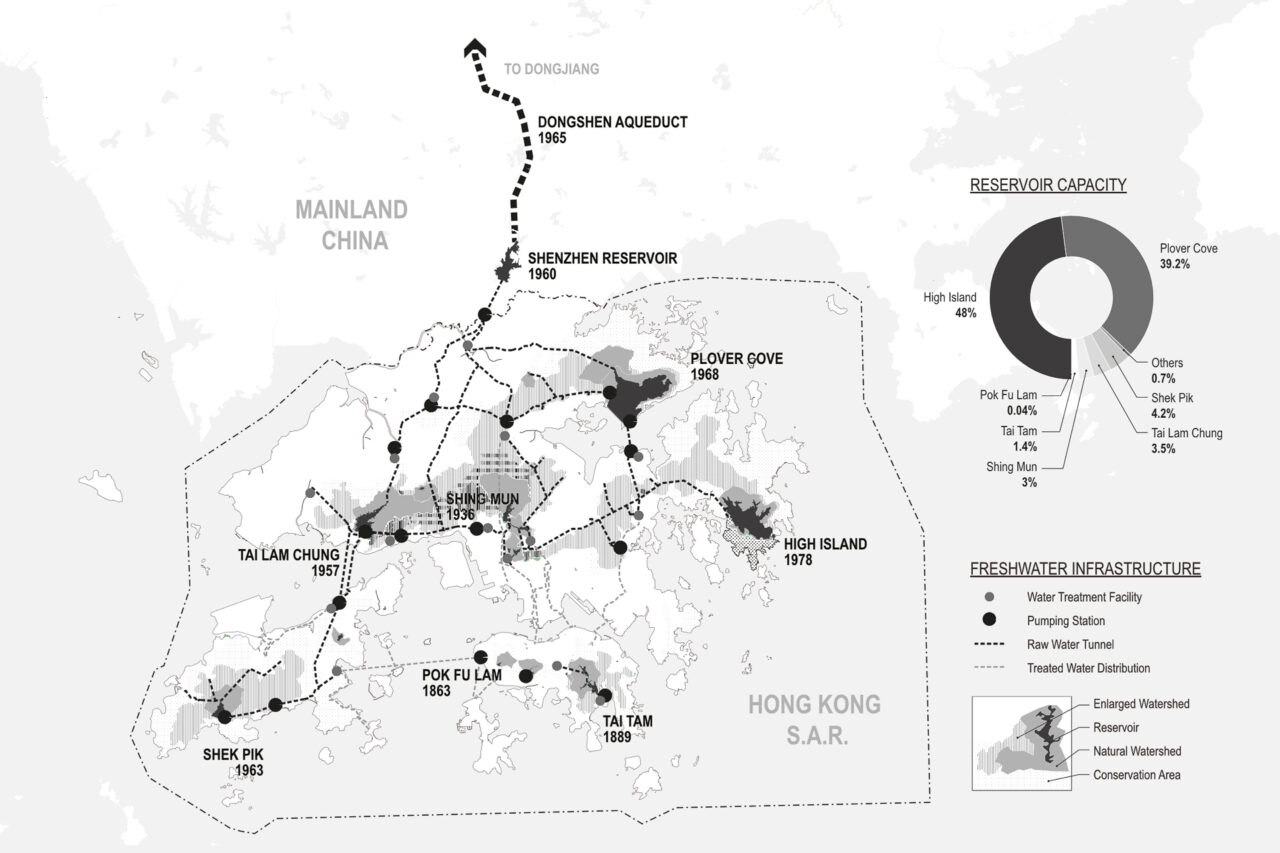
Water Security in Hong Kong
Dorothy Tang turns to Hong Kong’s reservoirs and aqueducts to illustrate how hydrological engineering is linked to broader concerns about colonialism, geopolitics, and territorial integrity. Focusing on Hong Kong’s chronic dependence on imports to secure its water supply, she examines the evolution of cross-border water management systems as the British colony transformed into a special administrative region of China.

Singapore’s Digital Aspirations
Hallam Stevens investigates Teleview, a unique videotex system that operated in Singapore in the 1980s and 1990s. By examining the state’s vision for Teleview and how the system was received by its users, Stevens uses emerging digital technologies as a prism to explore what kind of society Singaporean leaders hope to build through that networked online interaction. He argues that Teleview highlights the continuity of the country’s paternalistic infrastructure policies, while also illustrating how Singaporeans both accommodate and push back against those ideals.
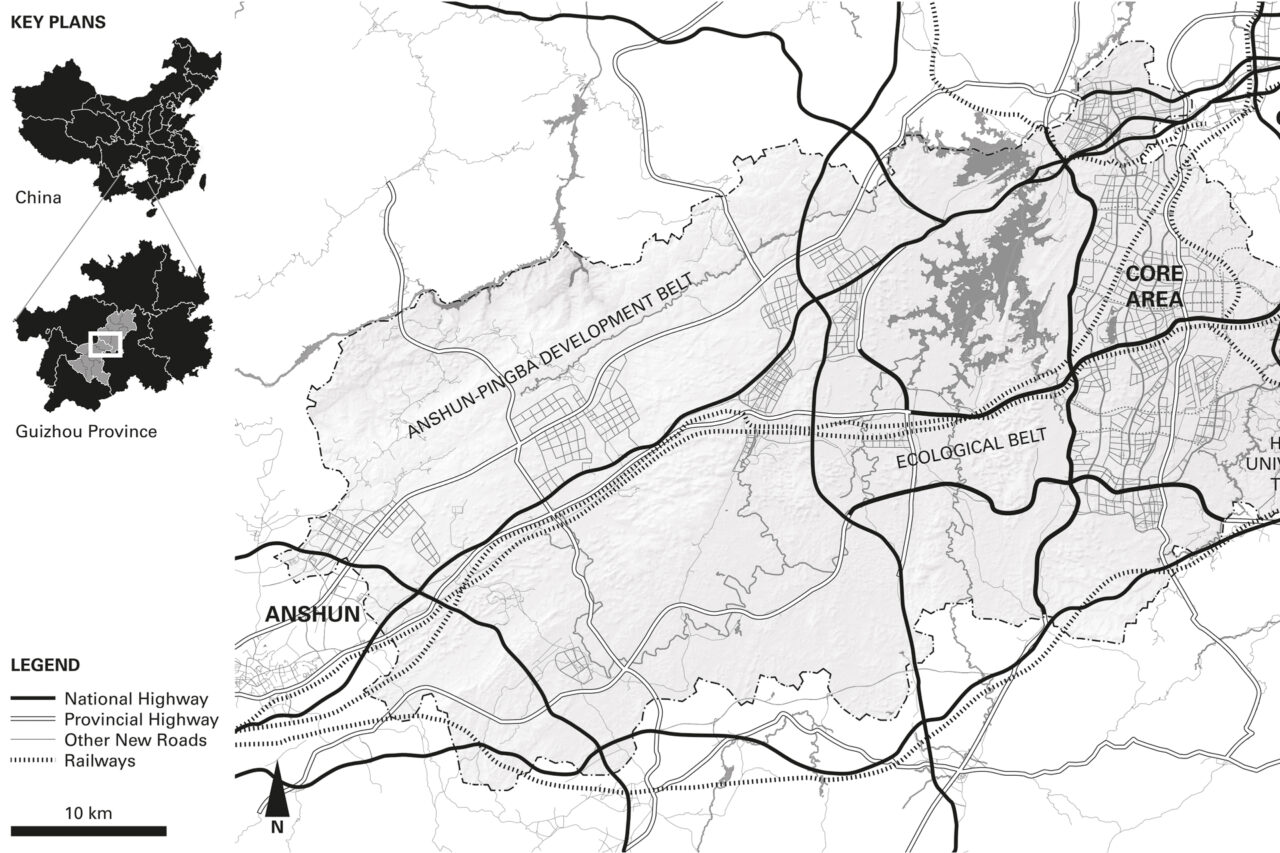
Infrastructural Urbanism in China
Tim Oakes studies how big data is producing new forms of infrastructure-led urban development in China. Focusing on Guizhou province, he reveals how Gui’an New Area emerged as a showcase of innovative digital and ecological urban design techniques. Planners and developers promote the area as an exceptional space of algorithmic governance, enabled by big data and physicalized by a regional transport grid that reorders the existing scale of city planning. Oakes situates Gui’an New Area as an emerging node in a nationwide network of surveillance and securitization.

Roads in High Asia
Till Mostowlansky and Tobias Marschall explore routes in the borderland of Afghanistan, China, Pakistan, and Tajikistan. In this region of High Asia, roads have long served as ambitious modernization projects, such as the Soviet Pamir Highway and the Pakistani-Chinese Karakoram Highway. The current development of Afghanistan’s highway to China parallels these predecessors, but it also follows and intersects with existing and emerging routes in the region. Investigating a parallel system of pathways and roads, the authors reveal how highway modernization projects coexist with a regional route network that enables the movement of goods, people, and information by less visible means.
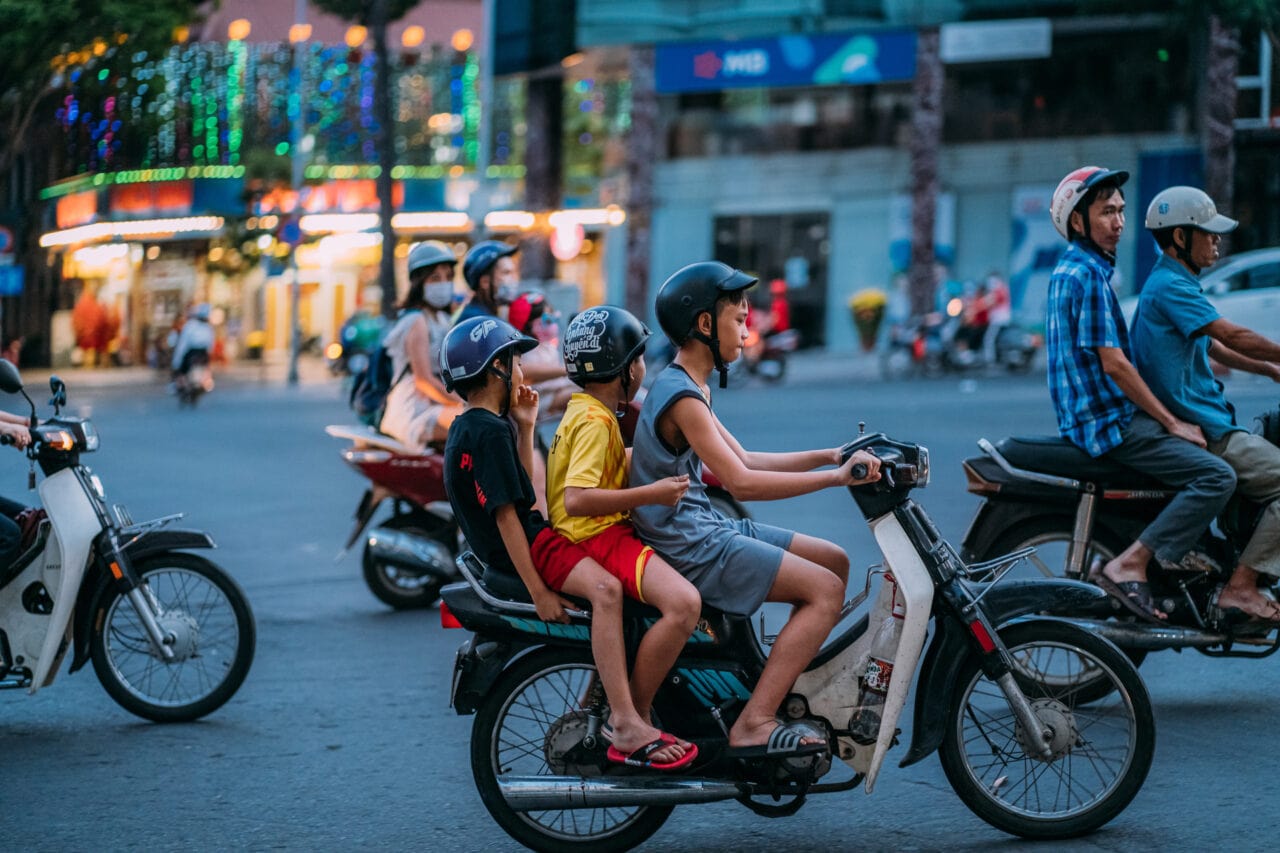
Motorbike Taxis in Vietnam
Jessica Lockrem investigates the impact of ridesharing apps on Ho Chi Minh City’s motorbike taxi drivers. Drivers play an integral role in keeping the city moving, providing transportation to local residents, sharing information with visitors, and enhancing the safety of public spaces. Arguing that ridesharing apps are challenging that traditional role, Lockrem reveals how digital technologies change the way drivers inhabit urban space while also effecting changes in the social and spatial practices of their customers.
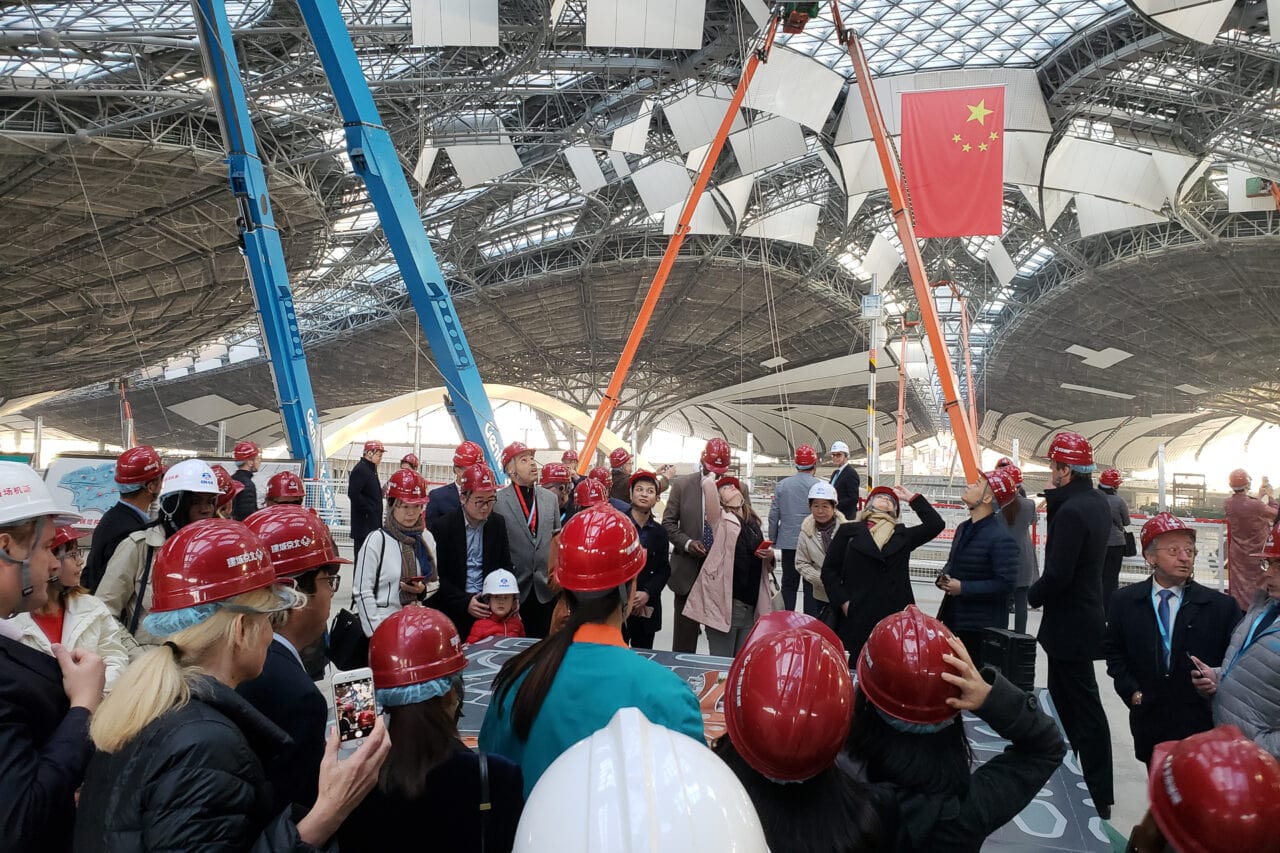
Foreign Experts and Chinese Airports
Max Hirsh investigates the role of foreign technical experts in developing China’s aviation infrastructure. Tracing the influx of critical know-how from Europe, Japan, and North America over the past 40 years, he focuses on a series of training and technical aid programs organized by overseas universities and airport planning firms. By establishing a leading-edge set of airport planning practices, these foreign professionals accelerated China’s reintegration into the global economy and empowered China to (re-)export its infrastructural knowledge to Africa, Asia, and the former Soviet sphere.
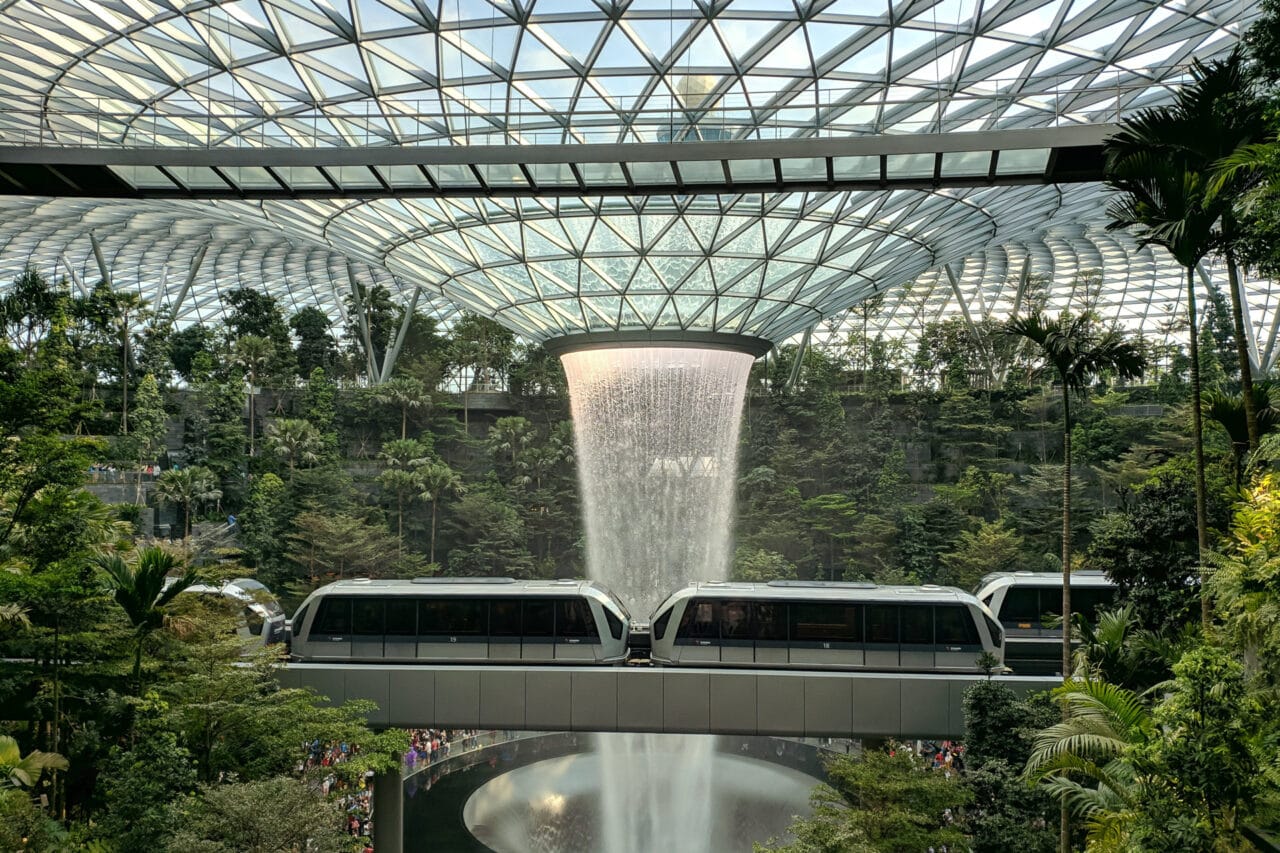
Infrastructural Futures
Edward Simpson reflects on the future of infrastructure in relation to broader multilateral processes of collaboration and disengagement. Juxtaposing infrastructure’s aspirational objectives with the messy reality of implementation, he observes an enduring ambition to modernize Asia through infrastructure despite the growing challenges of climate change. For Simpson, this raises the crucial question of how to establish resource equality and ecological responsibility under worsening environmental conditions.
Meet The Experts
Ten leading infrastructure experts in anthropology, architecture, geography, history, science and technology studies, and urban planning offer groundbreaking insights into infrastructure’s past, present, and future.

Max Hirsh
(PhD, Harvard) is managing director of the Airport City Academy and a research fellow at the University of Colorado Boulder. A leading global expert on infrastructure and urban development, he is the author of Airport Urbanism: Infrastructure and Mobility in Asia and editor of the aviation blog airporturbanism.com.
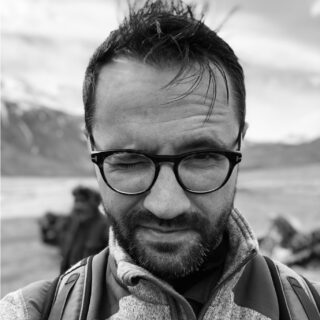
Till Mostowlansky
is a research professor of anthropology at the Geneva Graduate Institute, where he leads the collaborative research project Quiet Aid: Service and Salvation in the Balkans-to-Bengal-Complex. He is the author of Azan on the Moon: Entangling Modernity along Tajikistan’s Pamir Highway.

Mia M. Bennett
is an assistant professor of geography at the University of Washington in Seattle. She researches the geopolitics of infrastructure development in the Arctic through fieldwork and remote sensing. Mia is the founder and editor of the Arctic blog Cryopolitics.

Gökçe Günel
is an associate professor of anthropology at Rice University. She is the author of Spaceship in the Desert: Energy, Climate Change, and Urban Design in Abu Dhabi, which focuses on the construction of renewable energy and clean technology infrastructures in the United Arab Emirates.

Jessica Lockrem
holds a PhD in anthropology from Rice University. She is the managing editor of the Journal of Vietnamese Studies.
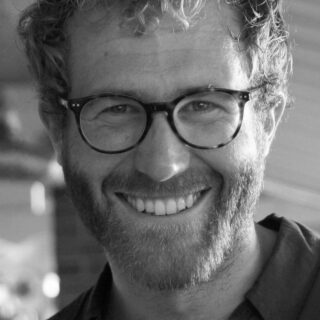
Tobias Marschall
is a photographer and PhD candidate in anthropology at the Geneva Graduate Institute. His dissertation is titled The Image of Remoteness: Alterity and Mobility in Eastern Afghanistan.
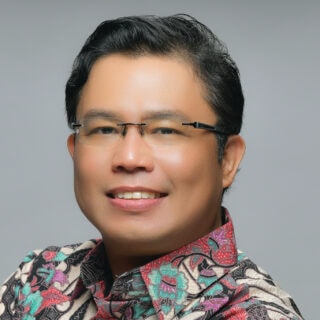
Anto Mohsin
is an assistant professor of science and technology studies at Northwestern University in Qatar. His teaching and research interests include Southeast Asian studies, environmental studies, energy studies, and disaster studies.
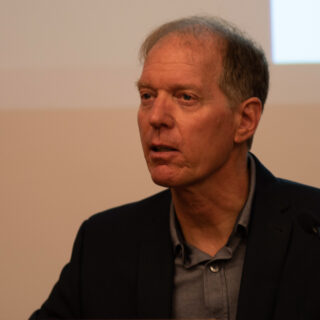
Tim Oakes
is a professor of geography at the University of Colorado Boulder and is project director for China Made, an international research collective researching Chinese export infrastructure development. His most recent book is Making Cultural Cities in Asia.

Edward Simpson
is a professor of social anthropology at the SOAS University of London, where he is director of the SOAS South Asia Institute. He is the author of Highways to the End of the World: Roads, Roadmen and Power in South Asia.
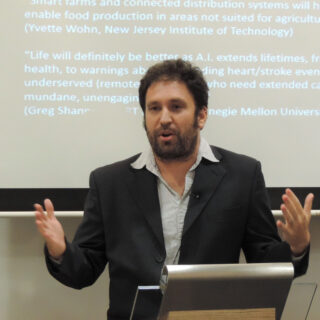
Hallam Stevens
is a professor of interdisciplinary studies and an associate dean at James Cook University in Townsville, Australia. His research is focused on genomics, the life sciences, big data, and the history of computers.
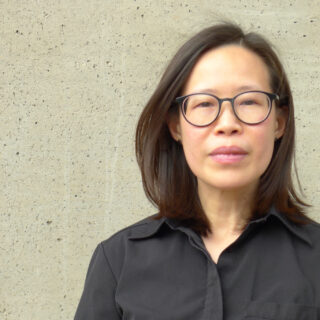
Dorothy Tang
is an assistant professor of architecture at the National University of Singapore. A registered landscape architect, her research and practice focus on urban and rural communities undergoing large-scale environmental changes

Andrew Toland
is a senior lecturer in landscape architecture at the University of Technology Sydney. His research investigates large-scale infrastructure projects in Greater China and the intersections of landscape design and law
Read the Book
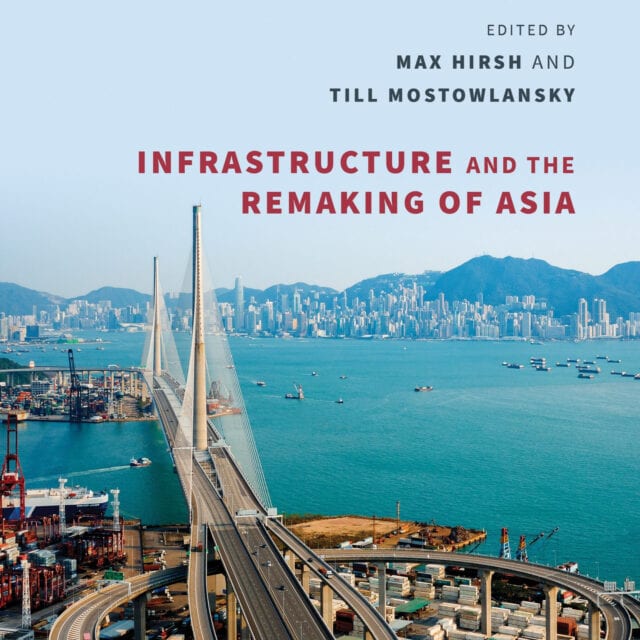
Infrastructure and the Remaking of Asia is available in paperback and hardcover formats. Order the book here.
The book is also available as an Open Access ebook. We would like to acknowledge the generous support of the Swiss National Science Foundation.
Download the book as a PDF (best for rapid download)
Download the book as an EPUB file (best for viewing high-resolution images)
News

Book launch: Europe
Wednesday, 2 November 2022The European book launch will take place at the Geneva Graduate Institute. Speakers include Max Hirsh, Till Mostowlansky, Rowan Palmer (UN Environment Program) and Sungmin Rho (Geneva Graduate Institute).
The event will take place from 6:30 to 8pm. Click here to register.
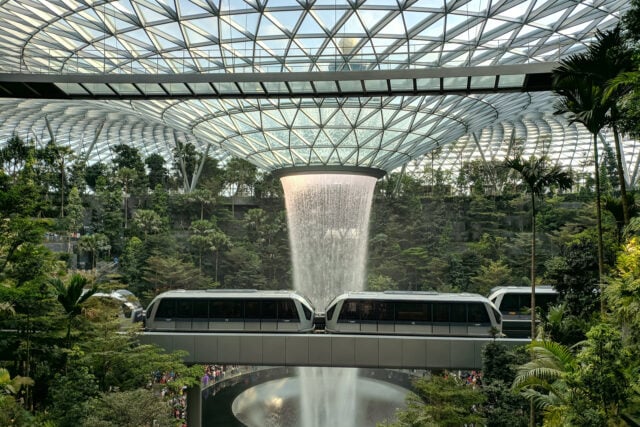
Book Launch: North America
Wednesday, 9 November 2022The Center for Asian Studies at the University of Colorado, Boulder is pleased to host the North American book launch. Speakers include Gökçe Günel, Max Hirsh, Tim Oakes, and Emily Yeh.
The event will begin at 4pm. More information.
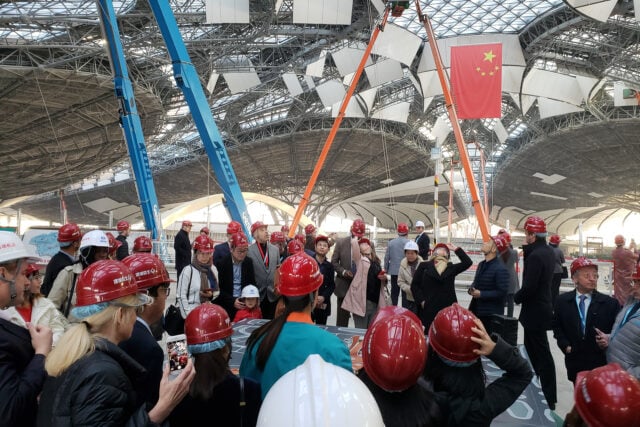
Book Launch: Asia
Friday, 3 February 2023The Asian book launch will take place at the Hong Kong Institute for the Humanities and Social Sciences. Speakers include Max Hirsh, Hallam Stevens, Dorothy Tang, and John D. Wang.
Click here to register.
Contact
Get in touch with the authors by email to schedule a book talk or request an interview.